# What is a Lightning Arrester? Essential Protection for Electrical Systems
Have you ever worried about your expensive electrical equipment getting fried during a thunderstorm? I know I have. That’s where lightning arresters come in.
A lightning arrester is a device that protects electrical systems from lightning strikes. It works by diverting the high voltage from lightning to the ground, keeping your equipment safe. Think of it as a superhero for your electrical system, always on guard against nature’s fury.

As someone who’s spent years in the power industry, I’ve seen firsthand how crucial these devices are. Let’s dive into the world of lightning arresters and discover why they’re so important for our electrical systems.
How Does a Lightning Arrester Work? Understanding the Basics
Picture this: you’re in the middle of an important project, and suddenly, a massive thunderstorm rolls in. Your heart races, thinking about all your expensive equipment. But with a lightning arrester, you can breathe easy.
A lightning arrester works by creating a low-resistance path for lightning current to flow safely to the ground. When lightning strikes, the arrester quickly diverts the surge away from your equipment. It’s like a traffic cop, redirecting dangerous electrical traffic to keep your system safe.
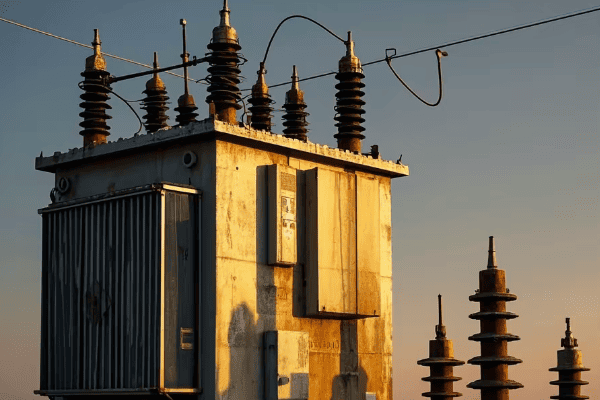
Let’s break down how these amazing devices work:
The Three Stages of Lightning Protection
- Detection: The arrester is always on alert, monitoring the voltage in your system.
- Diversion: When it detects a surge, it springs into action, creating a path of least resistance.
- Recovery: After the danger has passed, it goes back to its normal state, ready for the next strike.
Here’s a simple table to illustrate the process:
| Stage | What Happens | Why It’s Important |
|---|---|---|
| Detection | Arrester senses voltage spike | Rapid response is crucial |
| Diversion | Creates low-resistance path | Protects equipment from damage |
| Recovery | Returns to normal state | Ensures continuous protection |
I remember a time when I was working on a power substation project. We had just installed new lightning arresters, and that very night, a massive storm hit. The next day, we found that while nearby buildings had suffered damage, our substation was completely unscathed. It was a powerful demonstration of how effective these devices can be.
Types of Lightning Arresters: Which One Do You Need?
Choosing the right lightning arrester can feel like navigating a maze. With so many options out there, how do you know which one is right for your needs?
There are several types of lightning arresters, each designed for specific applications. The main types include metal oxide varistors (MOV), gas discharge tubes, and silicon avalanche diodes. Your choice depends on factors like voltage level, exposure risk, and the equipment you’re protecting.
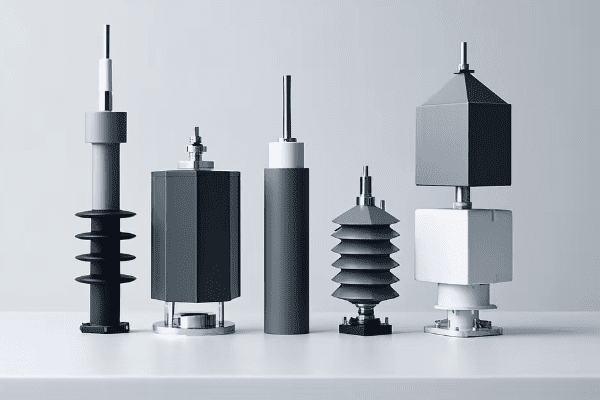
Let’s explore the different types and their best uses:
Comparing Lightning Arrester Types
-
Metal Oxide Varistors (MOV)
- Best for: High-voltage applications
- How they work: Use metal oxide elements to absorb surge energy
- Pros: Fast response, high energy absorption
-
Gas Discharge Tubes
- Best for: Telecommunications equipment
- How they work: Use ionized gas to create a short circuit during surges
- Pros: Long lifespan, can handle repeated strikes
-
Silicon Avalanche Diodes
- Best for: Low-voltage, sensitive electronics
- How they work: Use semiconductor technology to clamp voltage
- Pros: Very fast response, precise voltage control
Here’s a comparison table to help you choose:
| Type | Voltage Range | Response Time | Best Application |
|---|---|---|---|
| MOV | 100V – 1MV | Nanoseconds | Power distribution |
| Gas Discharge | 90V – 1000V | Microseconds | Telecom systems |
| Silicon Diodes | 5V – 400V | Picoseconds | Computer equipment |
In my experience, I’ve found that MOVs are the workhorses of the industry. I once worked on a project for a large data center. We chose MOV arresters for their main power lines due to their high energy absorption capacity. The client was initially skeptical about the cost, but after a particularly stormy season with zero equipment damage, they were more than convinced of the investment’s value.
Where to Install Lightning Arresters for Maximum Protection?
You’ve got your lightning arrester, but where should you put it? This is a question I get all the time, and it’s crucial for ensuring maximum protection.
Lightning arresters should be installed at key points in your electrical system where surges are likely to enter. This typically includes service entrances, main distribution panels, and near sensitive equipment. The goal is to create a multi-layered defense against lightning strikes.
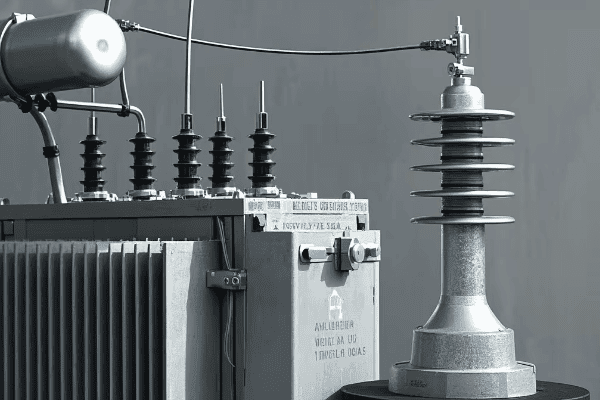
Let’s look at the best places to install lightning arresters:
Strategic Placement for Comprehensive Protection
-
Service Entrance
- Why here? It’s the first line of defense
- What it protects: Your entire electrical system
-
Main Distribution Panel
- Why here? Provides secondary protection
- What it protects: Branch circuits and downstream equipment
-
Near Sensitive Equipment
- Why here? Offers localized protection
- What it protects: Specific valuable or vulnerable devices
-
Outdoor Structures
- Why here? Protects against direct strikes
- What it protects: Antennas, HVAC units, outdoor lighting
Here’s a table showing the benefits of each installation point:
| Location | Protection Level | Equipment Safeguarded |
|---|---|---|
| Service Entrance | Primary | Whole building system |
| Distribution Panel | Secondary | Major appliances, circuits |
| Near Equipment | Tertiary | Computers, servers, etc. |
| Outdoor | Direct Strike | External systems |
I remember a project I worked on for a hospital. We installed arresters at multiple points throughout their electrical system. During a severe thunderstorm, the hospital’s critical equipment remained operational, potentially saving lives. It was a powerful reminder of why proper placement is so important.
When installing arresters, consider these factors:
- Proximity to protected equipment
- Grounding system quality
- Local lightning activity levels
- Building structure and materials
Remember, a well-planned arrester system is like a fortress, protecting your electrical equipment from all angles.
Lightning Arrester vs. Surge Protector: What’s the Difference?
I often hear people use the terms "lightning arrester" and "surge protector" interchangeably. But are they really the same thing? Let’s clear up this common confusion.
Lightning arresters and surge protectors are both protective devices, but they serve different purposes. Lightning arresters handle massive, short-duration surges from lightning strikes, while surge protectors deal with smaller, more frequent power surges from various sources. Think of arresters as bodyguards and surge protectors as bouncers.
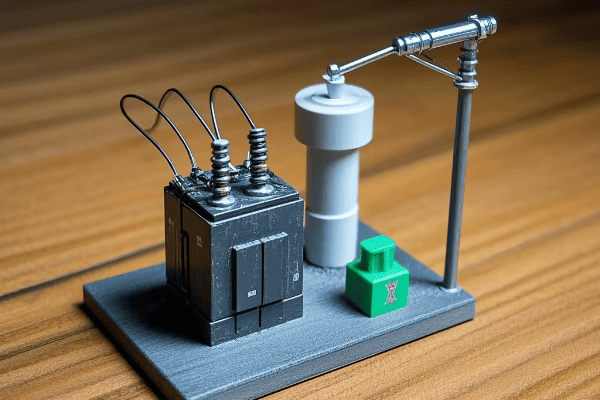
Let’s break down the key differences:
Understanding the Distinctions
-
Purpose
- Lightning Arrester: Protects against lightning strikes
- Surge Protector: Guards against smaller, everyday power surges
-
Capacity
- Lightning Arrester: Handles extremely high voltages (thousands of volts)
- Surge Protector: Manages lower voltage surges (hundreds of volts)
-
Response Time
- Lightning Arrester: Reacts in nanoseconds
- Surge Protector: Typically slower response
-
Installation
- Lightning Arrester: Usually installed at service entrance or distribution panel
- Surge Protector: Can be installed at outlets or as whole-house units
Here’s a comparison table to illustrate the differences:
| Feature | Lightning Arrester | Surge Protector |
|---|---|---|
| Voltage Handled | 10,000V+ | Up to 6,000V |
| Duration of Protection | Microseconds | Continuous |
| Typical Use | Outdoor, industrial | Indoor, residential |
| Cost | Higher | Lower |
I once worked on a project where a client had only installed surge protectors, thinking they were fully protected against lightning. After a direct strike caused significant damage, we added proper lightning arresters to their system. It was a costly lesson in understanding the difference between these two devices.
When designing a comprehensive protection system, I always recommend using both:
- Lightning arresters for primary protection against major strikes
- Surge protectors for secondary defense against smaller, frequent surges
This layered approach provides the best overall protection for your electrical system.
Maintenance of Lightning Arresters: Ensuring Long-Term Effectiveness
You’ve invested in lightning arresters, but how do you make sure they keep doing their job year after year? This is a critical question that many people overlook.
Regular maintenance of lightning arresters is crucial for their long-term effectiveness. This includes visual inspections, electrical tests, and timely replacements. Proper maintenance ensures your arresters are always ready to protect your system when lightning strikes.
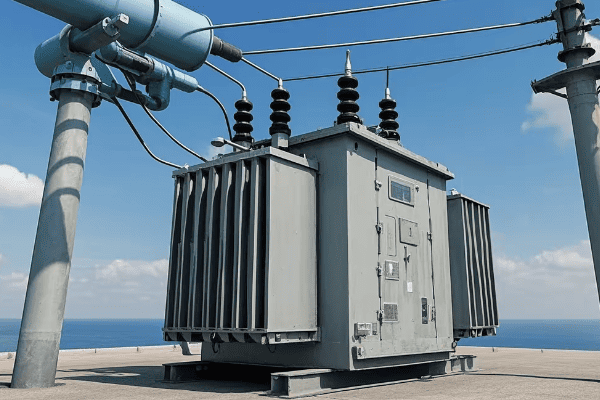
Let’s dive into the key aspects of maintaining your lightning arresters:
Essential Maintenance Practices
-
Visual Inspections
- Frequency: At least annually
- What to look for: Physical damage, corrosion, loose connections
-
Electrical Testing
- Frequency: Every 2-3 years
- Tests to perform: Insulation resistance, leakage current
-
Thermal Imaging
- Frequency: Annually
- Purpose: Detect hot spots indicating potential issues
-
Record Keeping
- Importance: Tracks performance over time
- What to record: Test results, visual inspection findings, any repairs
Here’s a maintenance schedule table to help you stay on track:
| Maintenance Task | Frequency | Importance |
|---|---|---|
| Visual Inspection | Annually | High |
| Electrical Testing | Every 2-3 Years | Critical |
| Thermal Imaging | Annually | Medium |
| Record Updating | After Each Check | High |
I recall a situation where a client neglected their arrester maintenance. During a routine check, we found several arresters had degraded significantly. We replaced them just in time before a major storm hit the area. It was a close call that highlighted the importance of regular maintenance.
When maintaining your arresters, keep these tips in mind:
- Always follow manufacturer guidelines
- Use qualified technicians for testing and repairs
- Keep spare parts on hand for quick replacements
- Consider environmental factors that may affect arrester lifespan
Remember, a well-maintained lightning arrester is your best defense against the unpredictable forces of nature.
Common FAQs About Lightning Arresters Answered
As someone who’s worked with lightning arresters for years, I’ve heard just about every question you can imagine. Let’s tackle some of the most common ones I get.
Lightning arresters are crucial but often misunderstood devices. People frequently ask about their lifespan, effectiveness, and whether they’re really necessary. Understanding these aspects can help you make informed decisions about protecting your electrical systems.

Let’s address some of the most frequently asked questions:
Your Top Lightning Arrester Questions Answered
-
How long do lightning arresters last?
- Typical lifespan: 15-20 years
- Factors affecting lifespan: Environmental conditions, frequency of surges
-
Can lightning arresters fail?
- Yes, they can fail due to:
- Age
- Repeated surges
- Manufacturing defects
- Regular testing is crucial to detect failures
- Yes, they can fail due to:
-
Do I need a lightning arrester if I have a surge protector?
- Yes, they serve different purposes (as discussed earlier)
- Lightning arresters handle much larger surges
-
How effective are lightning arresters?
- Highly effective when properly installed and maintained
- Can prevent thousands of dollars in equipment damage
-
Can I install a lightning arrester myself?
- Not recommended
- Professional installation ensures proper grounding and placement
Here’s a quick reference table for these FAQs:
| Question | Short Answer | Key Point |
|---|---|---|
| Lifespan | 15-20 years | Regular checks needed |
| Can they fail? | Yes | Testing is important |
| Needed with surge protector? | Yes | Different functions |
| Effectiveness | Very high | If properly installed |
| DIY installation? | Not recommended | Professional help advised |
I remember a client who was skeptical about the need for lightning arresters. They lived in an area with infrequent storms and thought it was an unnecessary expense. However, after I showed them data on lightning strike frequencies and potential damage costs, they quickly changed their mind. It’s always better to be prepared than to regret not taking action.
When considering lightning protection, keep these points in mind:
- Assess your specific risk based on location and equipment value
- Consider the cost of protection versus potential damage
- Consult with professionals for a tailored protection plan
Remember, when it comes to lightning protection, it’s always better to be safe than sorry.
Conclusion
Lightning arresters are essential guardians of our electrical systems. They protect against nature’s most powerful electrical forces, ensuring the safety and reliability of our equipment. Regular maintenance and proper installation are key to their effectiveness. Don’t wait for a lightning strike to realize their importance – be proactive in protecting your electrical investments.
Free CHBEB Transformer Catalog Download
Get the full range of CHBEB transformers in one catalog.
Includes oil-immersed, dry-type, pad-mounted, and custom solutions.
Quick Message
Request A free quote
We'd like to work with you
- +86 15558785111
- [email protected]
- +86 15558785111
What We Do
CHINA BEI ER BIAN (CHBEB) GROUP, with 218 million in registered capital, originated from Beijing Beierbian Transformer Group. Headquartered in Beijing for R&D, it operates major production bases in Nanjing and Yueqing, producing high-quality products.
Latest Product
address
BeiJing
No 3,RongJing East Road,BeiJing Economic Technological Development Area,BeiJing,China
JiangSu
No 7️Xiangfeng Road,Jiangning,NanJing,JiangSu,China
WenZhou
No.211, Wei 16 Road, Industrial Zone, Yueqing, Wenzhou, Zhejiang, China.
XiangYang Industrial Zone ,YueQing,WenZhou,ZheJiang,China
contact us
- [email protected]
- +86 13057780111
- +86 13057780111
- +86 15558785111
Copyright © Bei Er Bian Group


